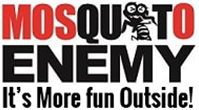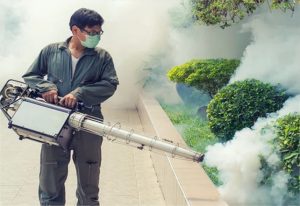Say Goodbye to No-See-Ums, Midges and May Flies: Expert Tips for Reclaiming Your Outdoor Spaces

As the warmer months roll in, homeowners in Essex, Middlesex,MA and Rockingham Counties prepare to enjoy their outdoor spaces, only to find their plans thwarted by the persistent presence of no-see-ums, biting midges, and May Flies. These tiny yet troublesome pests can quickly turn a peaceful evening into an itchy ordeal, leaving you yearning for a solution that provides relief and restores your enjoyment of the great outdoors. In this post, we delve into expert midge control strategies that are both effective and easy to implement, focusing on understanding the habits of these pesky invaders and offering practical preventative measures. With our guidance, you can confidently reclaim your backyard sanctuary from these minute menaces and create a more pleasant, pest-free environment for you and your family.
Understanding No-See-Ums and May Flies
Before we dive into control strategies, it’s crucial to understand the nature of these tiny pests. No-see-ums, biting midges, and May flies each have unique characteristics that influence their behavior and habitat preferences.
Identifying Biting Midges
Biting midges, commonly known as no-see-ums, are minute insects that can cause significant discomfort despite their small size. These pests are often mistaken for mosquitoes due to their biting habits.
No-see-ums are typically 1-3 millimeters in length, making them difficult to spot with the naked eye. Their wings are clear or slightly patterned, and they have long, slender legs.
Female no-see-ums are the primary culprits for bites, as they require blood meals to produce eggs. Their bites can cause intense itching and small, red welts on the skin.
May flies, on the other hand, are larger insects that don’t bite but can be a nuisance due to their swarming behavior during mating seasons.
Breeding Habits and Habitats
Understanding the breeding habits and preferred habitats of these pests is key to effective control. No-see-ums and May flies have distinct life cycles and environmental preferences.
No-see-ums typically lay their eggs in moist soil or aquatic environments. Their larvae develop in these damp areas, feeding on organic matter. Common breeding sites include:
-
Marshes and swamps
-
Moist soil near ponds or lakes
-
Tree holes filled with water
-
Decaying vegetation
May flies, in contrast, are aquatic insects that spend most of their life cycle as nymphs in freshwater environments. They emerge as adults for a brief period, often in large swarms near bodies of water.
Both species are attracted to light, which explains their tendency to gather around outdoor lighting fixtures and windows during evening hours.
Effective Midge Control Strategies
Now that we understand these pests better, let’s explore practical strategies to control their populations and minimize their impact on your outdoor activities.
Preventative Measures for Homeowners
Taking proactive steps to make your property less attractive to no-see-ums and May flies can significantly reduce their presence. Here are some effective preventative measures:
-
Eliminate standing water: Remove any sources of stagnant water around your property, including clogged gutters, old tires, and birdbaths.
-
Maintain your lawn: Keep grass short and remove excess vegetation, as these can provide shelter for midges.
-
Use outdoor lighting wisely: Install yellow “bug lights” or sodium vapor lamps instead of traditional white lights to reduce insect attraction.
Consider using fans in outdoor areas, as the air movement can deter these weak-flying insects. Additionally, wearing light-colored, long-sleeved clothing can provide some protection against bites.
Natural and Chemical Solutions
When it comes to controlling no-see-ums and May flies, both natural and chemical solutions can be effective. The choice depends on your preferences and the severity of the problem.
Natural solutions include:
-
Planting insect-repelling herbs like citronella, lavender, and marigolds
-
Using essential oils such as eucalyptus or peppermint in outdoor areas
-
Setting up natural predator habitats for birds and bats
Chemical solutions range from:
-
DEET-based insect repellents for personal protection
-
Pyrethrin-based insecticides for area treatment
-
Professional-grade misting systems for large-scale control
|
Solution Type |
Pros |
Cons |
|---|---|---|
|
Natural |
Environmentally friendly, Safe for pets and children |
May be less effective for severe infestations |
|
Chemical |
Highly effective, Long-lasting results |
Potential environmental impact, May require professional application |
Always follow product instructions carefully and consider consulting a pest control professional for severe infestations.
Reclaiming Your Outdoor Space
With the right strategies in place, you can transform your outdoor areas into comfortable, midge-free zones for relaxation and entertainment.
Creating a Midge-Free Zone
Establishing a midge-free zone in your outdoor space requires a combination of environmental management and targeted control measures. Here’s how you can create a more enjoyable outdoor area:
Start by assessing your landscape. Identify and eliminate potential breeding sites such as standing water, overgrown vegetation, and damp, shaded areas. Consider landscaping changes that promote better drainage and reduce moisture retention.
Next, focus on creating physical barriers. Install fine-mesh screens on windows and doors to prevent midges from entering your home. For outdoor seating areas, consider using screened enclosures or mosquito netting.
Lastly, incorporate repellent strategies into your outdoor decor. Use citronella candles or torches, and place potted insect-repelling plants around seating areas. These measures can significantly reduce midge activity in your immediate vicinity.
Professional Pest Control Services
While DIY methods can be effective, sometimes professional intervention is necessary for comprehensive midge control. Professional pest control services offer several advantages:
-
Expertise: Pest control professionals have in-depth knowledge of insect behavior and the most effective control methods.
-
Customized solutions: They can assess your specific situation and recommend tailored strategies for your property.
-
Advanced treatments: Professionals have access to more potent and long-lasting treatments not available to the general public.
Professional services may include:
-
Property-wide misting systems
-
Larvicide treatments for breeding sites
-
Ongoing monitoring and maintenance
When selecting a pest control service, look for companies with experience in midge control and positive customer reviews. Always ensure they use EPA-approved products and follow best practices for environmental safety.
Remember, a combination of preventative measures, targeted treatments, and professional support when needed can help you reclaim your outdoor spaces from no-see-ums, midges, and May flies.



